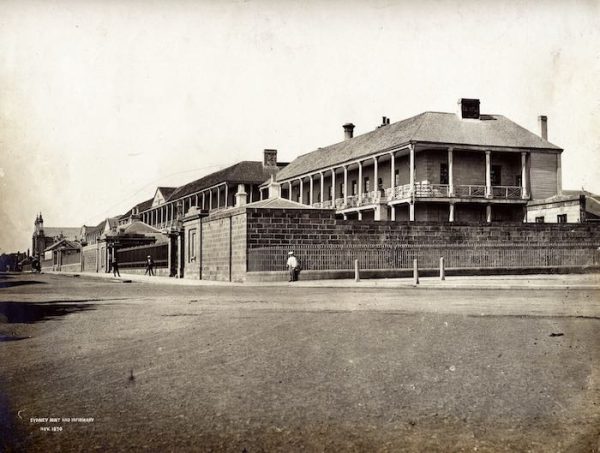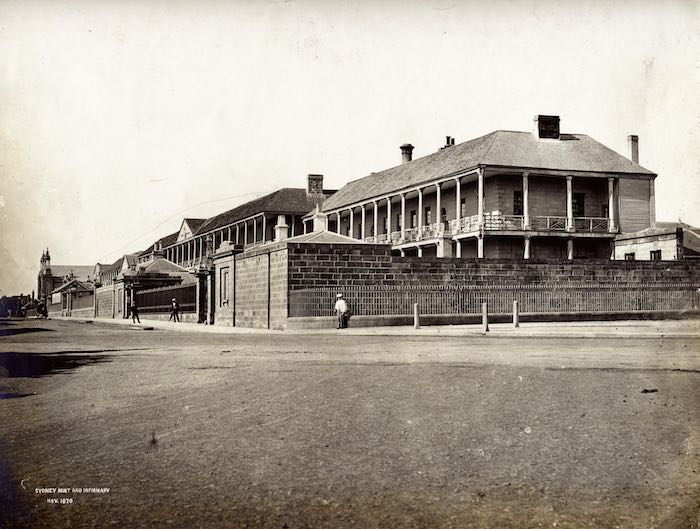Written by RAHS Volunteer, Maximilian Reid
On 14 May 1855, the Royal Mint in Sydney was first opened to the public. The discovery of gold in 1851 created the immediate need for such a vital institution due to the increased economic growth in the colony of New South Wales.

SYDNEY MINT & INFIRMARY [RAHS PHOTOGRAPH COLLECTION]
The building itself – housed in the southern wing of the General Hospital and Dispensary – was already undergoing a conversion. The Hospital, built in 1811, was three buildings grouped together and by 1850 had undergone several repairs and upgrades. So much so that the function of law courts was already taking place well before the Mint gained approval in 1853. Owing to its poor construction, outbreaks of dysentery in its hospital rooms were frequent, earning it the grim moniker of ‘Sydney Slaughterhouse’.[1]
The southern wing of the hospital was designated to be the site of the Mint and two men oversaw its design and construction. The initial plans of the building were inspired by the Crystal Palace of London, which the Deputy Master of the Royal Mint, Captain E H Ward had seen in 1851.[2] Owing to Captain Wards commitments in England to secure its construction, Joseph Trickett, Superintendent of the Coining Factory adapted Wards plans and oversaw construction.[3] The initial years of the Royal Mint were frenetic – the influx of gold saw 14,000 ounces in one week during October in 1855.[4] As well as a colourful episode in 1869 where bushranger Captain Moonlite ‘fenced’ his 129 ounces of gold into £503, the Royal Mint continued to be a hub of activity.
It could not entirely shake the shadow of redevelopment, however. Despite narrowly avoiding demolition in 1906, the Sydney Mint closed in 1926 with its declining profits and outdated infrastructure finally ringing the death knell.[5] The building itself continued to be known as the Mint and in 1997 it was transferred to the Historic Houses Trust where after a significant conservation and redevelopment project it stands today as an important and significant historical site in metropolitan Sydney.
References:
[1] Fiona Starr, ‘A Rum Deal’, Museums of History NSW, <https://mhnsw.au/stories/museum/a-rum-deal/>, accessed 23 May 2023.
[2] Historic Houses Trust [Sydney Living Museums], (2004), RAHS Library Collection.
[3] Historic Houses Trust [Sydney Living Museums], (2004), RAHS Library Collection.
[4] Starr, Fiona. 2021.
[5] Starr, Fiona. 2021.


0 Comments